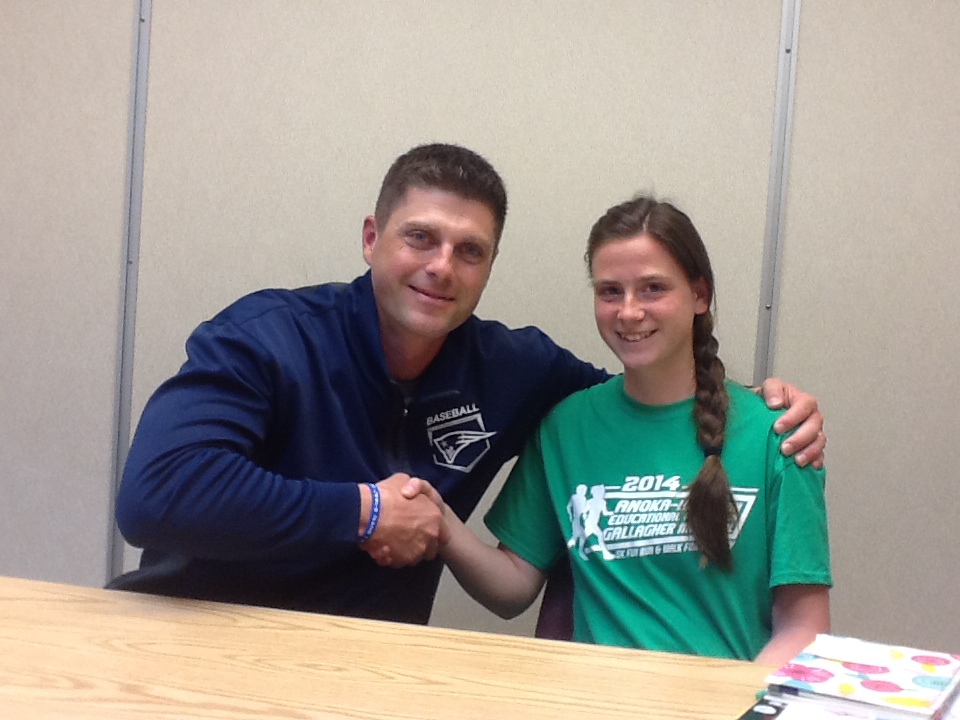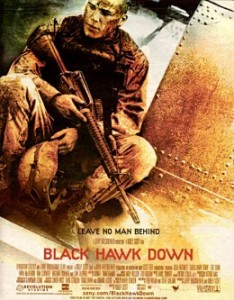
Liz Lindgren, a student from Champlin Park High School, was driving with her family to her sister's school. They were going through a curve in the road when a motorcycle in front of them hit its muffler on the ground while turning too quickly to switch lanes.
Liz and her sister ran over to the motorcyclist, who was showing no signs of life. Liz began performing CPR immediately with 30 chest compressions. Liz shares her thought process: "If I had to, I was going to do two breaths, but then he started moaning and his eyes were starting to move." Emergency responders arrived soon after that and took the man to the hospital.
Liz had learned CPR from her health teacher through the Student CPR program.
Liz's story serves to highlight (1) that bystander CPR saves lives and (2) that young adults are great rescuers. The American Heart Association has published this finding:
"Effective bystander CPR provided immediately after sudden cardiac arrest can double or triple a victim's chance of survival, but only 32 percent of cardiac arrest victims get CPR from a bystander. And of the nearly 383,000 out-of-hospital sudden cardiac arrests that occur annually, 88% of them occur at home."
This means that students who know CPR, like Liz, make ideal rescuers to help their parents, grandparents, and community members in an emergency. Schools who teach their students CPR create a wave of young rescuers who not only retain the knowledge well, but also have an abundance of confidence that results in action rather than hesitation when time is of the essence.
The high potential of young rescuers is a driving force for the wave of state legislation requiring or recommending CPR as a graduation requirement for secondary schools.
Research About CPR & Young Adults
88% of high school students agree that CPR should be a mandatory part of school curriculum.
Study Description: 1720 secondary school students participated in a 1 ½ hour CPR training program. Before the training, most students had little knowledge on the topic. A questionnaire regarding opinion and willingness about the obligation of CPR-training in school was completed before and after the CPR training.
32% of students feel confident enough to provide CPR compared to 21% of adults in a separate study.
Study Description: A total of 3844 school students from seven schools participated in a CPR training program. A questionnaire regarding self-perceived ability and courage was completed before and after the CPR training.
Young People & CPR in the News
Boy saves Sister with CPR, learned from 'Black Hawk Down'

After seeing the movie Black Hawk Down, a nine-year-old boy was able to save the life of his sister. After watching a scene in the movie which demonstrated CPR, he asked his parents to teach him the technique. When his sister's life was in jeopardy, he snapped into action without really thinking about what he was doing.
Tristan Saghin wants to be a medic when he grows up. His two-year-old sister, Brooke, fell into a swimming pool and wasn't breathing when her mom pulled her out of the water. Tristan quickly urged their grandmother to call 911 as he began CPR.
"You don't expect that to ever come to a place where it saves your daughter," Saghin says. "He feels proud that he did it, and we tell him, 'We're real proud of you.' "
Two Teenagers saved Lives with CPR they learned in School

Sixteen-year-old Ayantu Kumburo and her friend Mubarek Muhammedsede, 13, were playing basketball around the pool with others when they heard cries for help and splashing. Two younger children, a 13 year old and a 9 year old, were swimming and had ventured to the deep end and had started to drown. Sixteen-year-old Ayantu Kumburo ran to the pool and jumped in, diving toward the bottom to pull the younger nine-year-old out. He was at the bottom of the pool. She then called for her friend to help get the older boy out of the pool.
The teens started CPR on the boys using what they learned in school. While it was scary for them, they only knew that they wanted to help. When police arrived, the eldest of the pair was awake and talking.
Learning CPR in school was a vital part in saving lives that day in Sioux Falls.
CPR-trained Students save life of School Employee

A pair of undergrads at Northeastern University saved the life of a school employee who had collapsed on a field where they were practicing with their Ultimate Frisbee club. Danielle Pesko and Samantha Cook rushed to the aid of the facilities department employee, Jake, who was motionless after collapsing. They saw him on the ground, rushed over, and immediately began CPR.
They said that it was kind of surreal, but had trained for a situation such as this so many times that they had the confidence they needed to know what to do. Danielle Pesko had learned CPR as a lifeguard. Samantha Cook had learned it as part of a health sciences course, where it is required as part of the curriculum.
They were also glad that they both knew what they were doing, because CPR is physically difficult, but it is much easier to handle with more people involved.
EMTs arrived quickly and took over with their equipment. The CPR the students had given was expertly executed, as the man was able to return to his wife and family.




